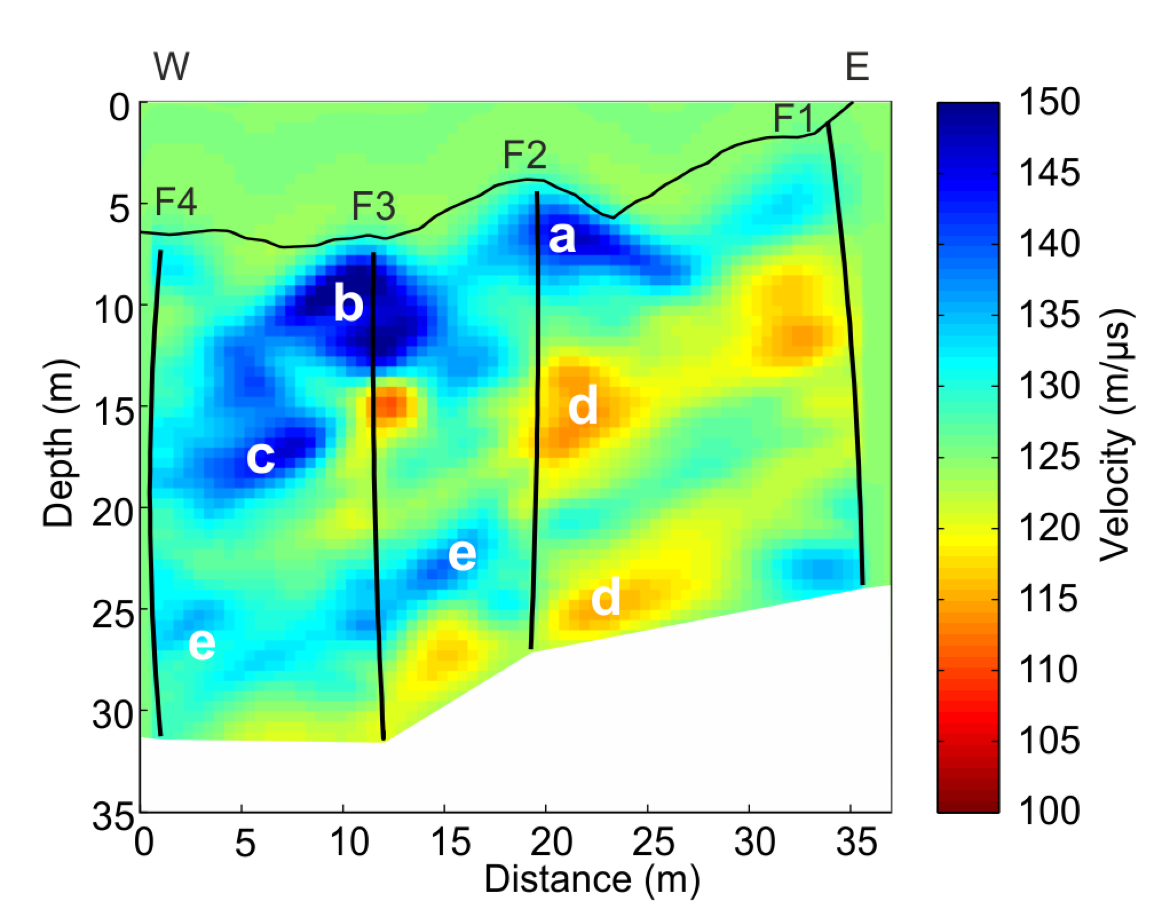Properties
Nonmigrated GPR images of geological structures comprise reflections and diffractions generated at abrupt changes in GPR velocity and attenuation. In many geological environments, GPR velocity is controlled by electrical permittivity, whereas attenuation is controlled by electrical conductivity. Table 1 shows permittivities and conductivities of typical rock glacier material. The pore filling material (i.e. air, water and ice) plays a critical role in determining GPR reflectivity within and at the base of a rock glacier.
Table 1: Relative electrical permittivities and electrical conductivities of materials within rock glaciers (modified from [Ann07]).
Material |
Relative Permittivity |
Electrical Conductivity (mS/m) |
air |
1 |
0 |
fresh water |
80 |
0.5 |
dry sand |
3 - 5 |
< 0.01 |
water saturated sand |
20 - 30 |
0.1 - 1 |
silt |
5 - 30 |
1 - 100 |
shale |
5 - 15 |
1 - 100 |
limestone |
4 - 8 |
0.5 - 2 |
granite |
4 - 6 |
0.01 - 1 |
ice |
3 - 4 |
0.01 |
GPR velocities of a small part of the Furggwanghorn rock glacier have been determined from crosshole experiments (Fig. 410 ; [MMR+16]). We have interpreted the type of rock glacier material at locations a to e in Fig. 410 based on borehole information and nearly coincident seismic velocity and electrical resistivity models (Table 2; [MMR+16]).
Since the tomographic experiment sampled only a limited range of the geological and pore filling material at the Furggwanghorn site ([MMR+16]), we have added to Table 2 GPR velocities and attenuations of rock glacier material determined from tomographic experiments at a similar rock glacier in eastern Switzerland ([MMHG06]). The various rock glacier units and bedrock have a sufficient range of physical properties, in particular the velocities (80 to >140 m/μs), to generate significant reflections between the units and between the rock glacier and bedrock.

Fig. 410 GPR velocity tomogram derived from traveltime data acquired between boreholes F1, F2, F3 and F4 (locations are shown in Fig. 408 c and Fig. 409).
Table 2: GPR velocities of rock glacier material at the Furggwanghorn rock glacier in the western Swiss Alps 1 ([MMR+16]) and GPR velocities and attenuations of rock glacier material at the Muragl rock glacier in the eastern Swiss Alps 2 [MMHG06].
Material |
Velocity (m/μs) |
Attenuation (1/m) |
|---|---|---|
unconsolidated sediments with numerous
significant air voids (zones a and b)
|
>140 1, 2 |
0.10 - 0.20 2 |
ice rich regions (zone c)
|
>140 1, 2 |
0.04 - 0.09 2 |
partially ice saturated region with some free
water, possibly flowing along preferred
paths (zone d)
|
110 - 130 1 |
|
compact debris (zone e)
|
130 - 140 1 |
|
water saturated sediments
|
80 - 100 2 |
0.16 - 0.24 2 |
bedrock
|
110 - 130 2 |
0.16 - 0.24 2 |